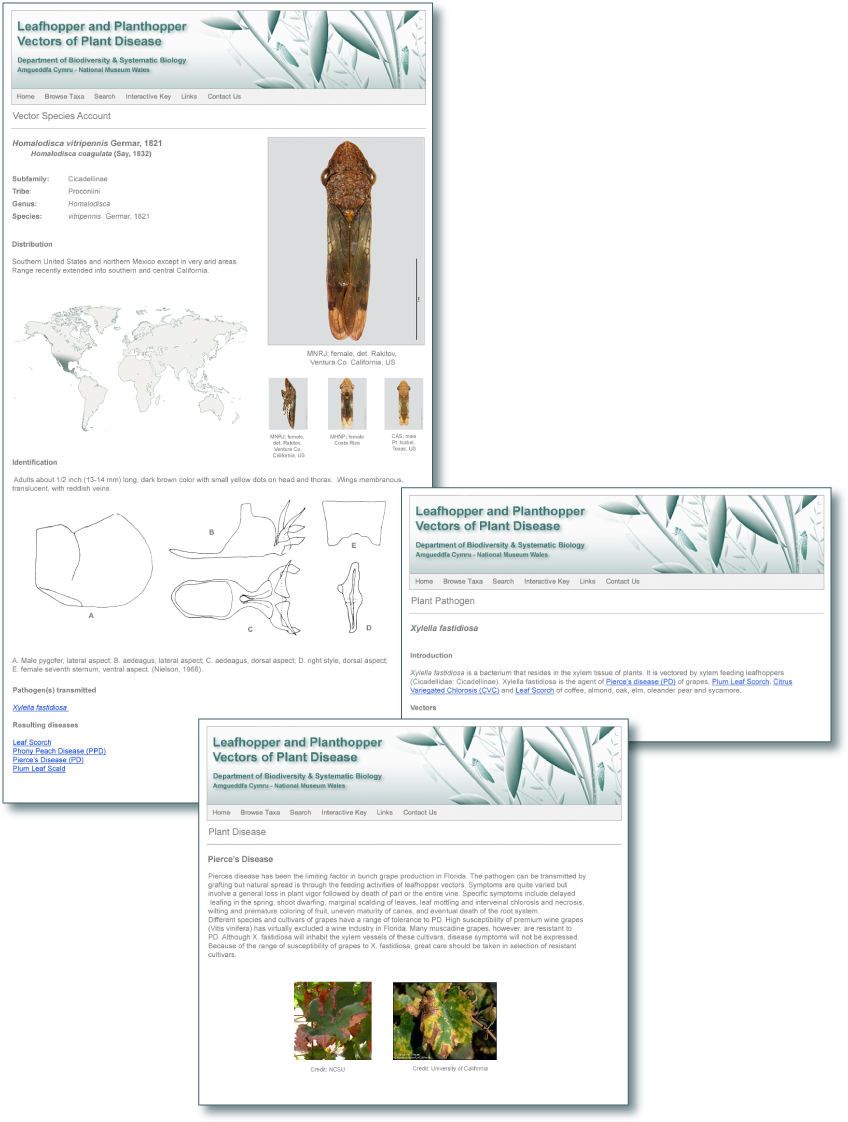- Introduction
- Classification
- Historical study
- Who described the species?
- Specimen depository
- Future research
Enable JavaScript for full functionality

BIOTIR 4
Sharpshooter Leafhoppers
(Hemiptera: Cicadellinae)
An Illustrated Checklist
Part 1: Old World Cicadellini
Hardcover - 232 pages - Full colour throughout
£50.00 (plus P & P)
ORDER
Future research

Leafhopper, Planthopper and Psyllid Vectors of Plant Disease
Leafhppers and planthoppers feed from plant tissue using piercing and sucking mouthparts and many are important pests of crop plants, particularly because they are vectors of virus, bacteria and phytoplasma diseases. Around 200 species are already known to spread plant disease but many more are likely to be recognised. Molecular techniques are also more likely to allow the more rapid identifications of insect vectors. However, few comprehensive identification keys are available and details of pest species are mostly scattered in the specialist literature. However, few comprehensive identification keys are available and details of pest species are mostly widely scattered in the specialist literature.
Objectives
This project, funded by The Leverhulme Trust, will provide a comprehensive and accessible guide to the leafhopper and planthopper vectors of phytoplasma, bacteria and virus diseases.
Datasheets will be developed that will include high quality digital images of adult insects (and nymphs where available), taxonomic drawings of morphological features, and text on the biology and pest status of each species.
Each species datasheet will include:
• Species Taxonomy
• Distribution
• Species Identification
• Biology & host plant interactions
• Pathogens & diseases transmitted
• Bibliography and references
Datasheets will be aimed at both professional use as well as by workers in developing countries seeking to find accurate information on identification.
This work will directly assist in identification of known vector species but should also lead to more rapid progress in discovering further vector species
As well as information on known vector species it will be important that introductory material will be provided. The guide will serve as an introductory guide to the groups generally as well as placing emphasis on those that contain pest species
It is not proposed to include aphids and whiteflies, which are known as vectors of many plant viruses. Guides to the identification of aphids and whiteflies are already available.
How will the information be published and disseminated?
This project will bring together knowledge of both phytoplasma, bacteria and virus disease with taxonomic details of the insect vectors and will be available to both plant pathologists and entomologists. The final products will be made available in various media forms.
• Published Handbook - Full colour handbook containing all datasheets and
additional information on vector species and plant disease.
• Published Website - Fully searchable data base-driven website to allow for rapid
and easy access to vector species and
plant disease information.
• PDF Datasheets - Individual PDF datasheets, accessed via download from the website, to allow users to create individual printed
compendiums to suite their requirements.
The approach taken of web-based and published handbook will make dissemination easy, flexible and inexpensive.


